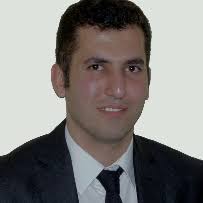Scientific Program
Keynote Session:
Title: SMART CITY PLATFORM: SCALABILITY, INTEROPERABILITY AND REPLICABILITY PLATFORM TO MANAGE URBAN APPLICATIONS
Biography:
She is currently a senior researcher at the Italian National Agency for New Technologies, Energy and Sustainable Economic Development (ENEA) in the Energy Technology Department, where she works on ICT for energy efficiency issues. She received her master’s degree in mathematics in 2004, and her PhD in applied mathematics and computer science in 2008 from the University of Naples, Italy, with a thesis on stochastic self-similar processes and application in non-linear dynamical systems. Prior to her appointment with ENEA, she was a fellow and research assistant at the University of Salerno and a postdoctoral research fellow at ENEA. Marta has held different professorship positions while at ENEA, including Adjunct Professor in Qualitative Methods and Mathematics for Economic and Business, and Professor in Mathematics and Economics for the MBA course at the Link Campus University, Rome, She is involved in many national projects and international research projects (also as project leader).
Abstract:
In a smart city environment, the explosive growth in the volume, speed, and variety of data being produced every day requires a continuous increase in the processing speeds of servers and entire network infrastructures, platforms as well as new resource management models. This poses significant challenges (and provides attractive development opportunities) for data-intensive and high-performance computing, i.e., how to turn enormous datasets into valuable information and meaningful knowledge efficiently. The variety of sources complicates the task of context data management such as data derives from, resulting in different data formats, with varying storage, transformation, delivery, and archiving requirements. At the same time, rapid responses are needed for real-time applications. With the emergence of cloud infrastructures and platforms, achieving highly scalable data management in such contexts is a critical problem, as the overall urban application performance is highly dependent on the properties of the data management service. This means, continuously developing and adopting ICT technologies to create and use platforms for government, business and citizens can communicate and work together and provide the necessary connections between the networks that are the base for the services of the smart city [1]. The main features of a generic Smart City Platform (SCP) are in the following [2].
•Make data, information, people and organizations smarter;
•Redesign the relationships between government, private sector, non-profits, communities and citizens;
•Ensure synergies and interoperability within and across city policy domains and systems (e.g. transportation, energy, education, health & care, utilities, etc.);
•Drive innovation, for example, through so-called open data, living labs and tech-hub.
In this work, the authors propose an approach and describe a methodology and a modular and scalable multi-layered ICT platform called ENEA Smart City Platform (ENEA-SCP) to address the problem of cross-domain interoperability in the context of smart city applications. The ENEA-SCP is implemented following the Software as a Service (SaaS) paradigm, exploiting cloud computing facilities to ensure flexibility and scalability. Interoperability and communication are addressed employing web services, and data format exchange is based on the JSON data format. By taking into account these guidelines as references, this work provides a description of the SCP developed by ENEA and its potential use for smart and IoT city applications. The solution provided by ENEA SCP to exploit potentials in Smart City environments is based on four fundamental concepts: Open Data,
Interoperability, Scalability, Replicability. In this scenario, the ENEA SCP is going to tackle the issues concerning these two aspects providing a reference framework of modular [2] specifications for stakeholders willing to implement ICT platforms to exploit the Smart City vision potentials and therefore offer new services for the citizen. The ENEA Smart City Platform exploits computational resources of the ENEAGRID infrastructure [3], as it is deployed in the cloud hosted in the Portici Research Center site. The creation of a customized environment ENEA cloud-based platform is possible thanks to the virtualization technologies of VMWARE platform, which allows hosting the management, the transportation and the processing of project data services, ensuring their availability and protection over time. More in detail, the SCP is composed by six Virtual Machines (VMs), and each of them hosts a component with a specific role
Title: USE OF MACHINE LEARNING TECHNIQUES FOR PROCESSING REMOTELY SENSED IMAGES OF FLOODS
Biography:
Dr. Mohammad Zare is working as a senior scientist, with focus on flood simulation/prediction models applying machine learning (ML) and artificial intelligence (AI) techniques, spatial data management and developing remote sensing models at RSS-Hydro’s research and education department (RED), Luxembourg. He graduated from his PhD in July 2017 at the University of Kassel, faculty of Civil and Environmental Engineering, Germany. Dr. Zare has been working at several universities and research institutes in Germany and Luxembourg. During years past, his research ideas were funded through projects by different funding frameworks, including the German Academic Exchange Service (DAAD), EU-funded ICT-AGRI and the Luxembourg National Research Fund (FNR).
Abstract:
Changing hydrological conditions are occurring all over the world, owing mostly to phenomena of climate change that affect atmospheric and earth surface processes. Temporal and spatial changes in rainfall have caused fundamental variations in the water cycle, including extremes such as flood events. Losses due to all types of floods are not only of economic nature (several billions of EUR every year at global level) but there is also considerable loss of lives. Responding appropriately to these threatening situations necessitates the use of innovative flood management techniques and technologies more than ever. The main priority of any flood management solution is to find suitable methods and models in order to manage floods better and to prepare facing this natural hazard and risk phenomenon and minimizing losses. Decision making and planning for the prediction of flood events and their generating processes require the use of adequate models and methods. In recent years, appropriate models and algorithms such as machine learning (ML) and deep learning (DL) have been developed and used in many research projects dealing with flood mapping. In this regard, the main purpose of this study is to present a review of applying ML/DL methods to process remotely sensed images for generating flood maps. Moreover, the basic concepts of some ML data driven methods are presented. Three case studies with different ML algorithms have been selected and are illustrated to provide a better understanding of their application in flood studies. The findings of these case studies show that ML models are mostly applied to identify and predict flooded versus non-flooded pixels in images but important challenges remain. These challenges need to be solved if ML is to be valuable for decision making processes related to flood management.



